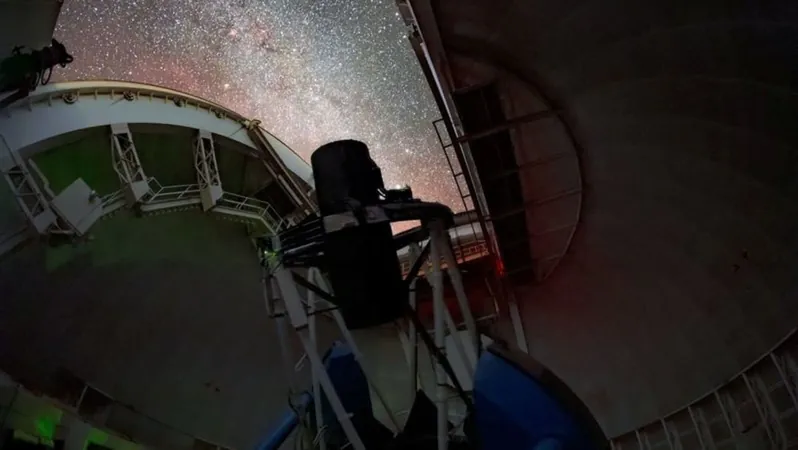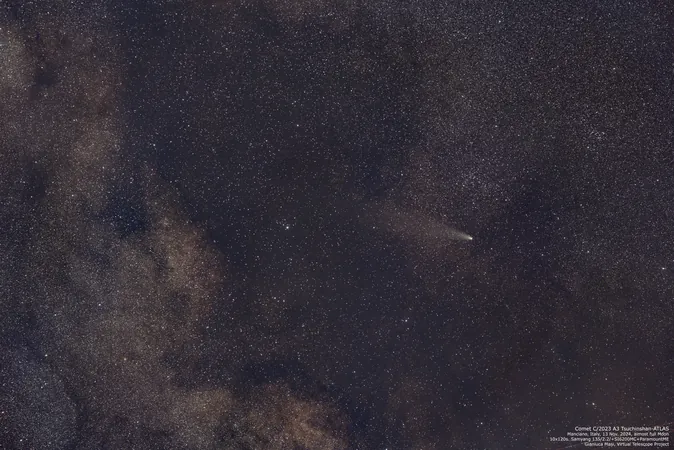
Groundbreaking Research Confirms Einstein’s Vision of Gravity in Expanding Universe
2024-11-20
Author: John Tan
Groundbreaking Research Confirms Einstein’s Vision of Gravity in Expanding Universe
In an extraordinary development that could reshape our understanding of the universe, an international team of scientists has unveiled findings that support Albert Einstein’s theory of general relativity regarding the behavior of gravity over vast cosmic scales. This pivotal research reveals how the structure of the cosmos has developed over the past 11 billion years, providing vital insights into the enigmatic force known as dark energy, which is accelerating the universe's expansion.
The findings were revealed on Tuesday and stem from extensive data collected by the Dark Energy Spectroscopic Instrument (DESI) at Kitt Peak National Observatory in Arizona. DESI is capable of simultaneously analyzing light from up to 5,000 galaxies, making it a powerful tool for cosmological studies.
Einstein's 1915 theory of general relativity fundamentally changed our understanding of gravity, linking it to the fabric of space and time. Mass and energy bend space-time, influencing the motion of objects in their vicinity. Despite its successes, including the concept of an accelerating universe first proposed in 1998, there have been discussions among scientists suggesting that modifications to general relativity may be necessary.
However, the latest DESI observations offer compelling evidence that gravity operates as predicted by Einstein’s groundbreaking theory. By examining structures formed in the universe when it was merely 20% of its current age, researchers mapped out the cosmic web—a vast network of galaxies, clusters, and superclusters—interconnected through gravitational forces, with massive voids scattered throughout.
The analysis scrutinized nearly 6 million galaxies and their luminous cores, pushing the boundaries of our comprehension of cosmic evolution. Prior research using DESI last April produced the largest three-dimensional map of the universe, hinting at a notable dynamism in dark energy itself.
“We found remarkable consistency with Einstein's theory while also indicating that dark energy might not be a static force but could be changing over time,” said Mustapha Ishak-Boushaki, co-leader of the research team. This dual revelation hints at the possibility that dark energy may weaken in the future, suggesting the universe's expansion could eventually stabilize rather than accelerate indefinitely.
Dragan Huterer, another key figure in the study, emphasized the importance of these findings: “Verifying the standard cosmological model and understanding the true nature of dark energy are among the most critical challenges in modern astrophysics.” Currently, about 68% of the universe is believed to consist of dark energy, while approximately 27% is made up of dark matter—a mysterious material that does not emit light or energy.
The collaborative effort involves over 900 researchers from more than 70 institutions worldwide, coordinated by the Lawrence Berkeley National Laboratory under the U.S. Department of Energy. The groundbreaking research is now available online in the arXiv repository, pending peer review.
As scientists continue to probe the depths of the cosmos, these revolutionary findings not only confirm Einstein’s theories but also unveil a more dynamic future for the universe that could put to rest long-held assumptions about its relentless expansion. Are we on the brink of discovering new physics that could redefine our place in the cosmos? Only time will tell.



 Brasil (PT)
Brasil (PT)
 Canada (EN)
Canada (EN)
 Chile (ES)
Chile (ES)
 España (ES)
España (ES)
 France (FR)
France (FR)
 Hong Kong (EN)
Hong Kong (EN)
 Italia (IT)
Italia (IT)
 日本 (JA)
日本 (JA)
 Magyarország (HU)
Magyarország (HU)
 Norge (NO)
Norge (NO)
 Polska (PL)
Polska (PL)
 Schweiz (DE)
Schweiz (DE)
 Singapore (EN)
Singapore (EN)
 Sverige (SV)
Sverige (SV)
 Suomi (FI)
Suomi (FI)
 Türkiye (TR)
Türkiye (TR)